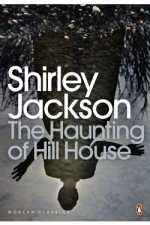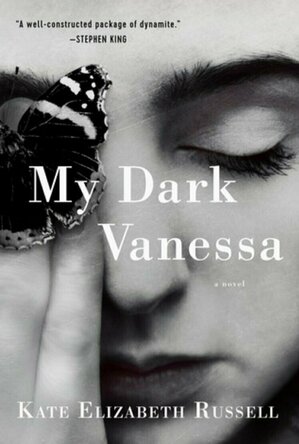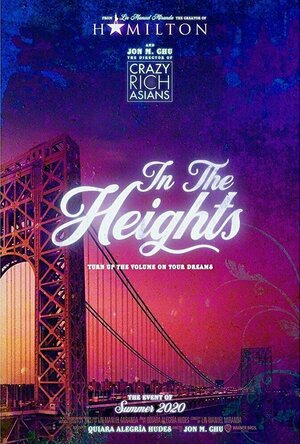EmersonRose (320 KP) rated The Haunting of Hill House in Books
Nov 20, 2019
Dr. Montague wishes to track the supernatural and write a factual paper on hauntings. He enlists the help of two women who he believes to have connections with the unnatural. The first is Theodora lighthearted and the center of attention, and Eleanor, quiet and fragile but ready for something in her life to change. Their party is completed by Luke, the charming heir to Hill House. The unnerving atmosphere of the house puts them all on edge from the moment they see it, but things only get stranger as the power of the house grows.
I was drawn to this book for several reasons. First, it was the week of Halloween, why not get into the spirit. But Hill House had begun to orbit in my life before this. I myself read The Lottery in my eighth-grade creative writing class. I also recently read a book called House of Leaves by Mark Z. Danielewski, which is also a haunted house story and Shirley Jackson’s book began getting recommended to me. As I started to read the book, I began to have this feeling best expressed through a quote from the book itself: “Am I walking toward something I should be running away from?”
When I started reading the story, I could not help but let my thoughts fly trying to solve 13388the mystery myself. The language of the book captured my attention completely. The descriptions built up the house so vividly in my imagination. The haunting Victorian atmosphere is both beautiful and disturbing. The unnerving and uncomfortable were created, kept up, and made the book hard to put down. I loved wondering about Mrs. Dudley, questioning the other characters, and imagining what could be knocking on the door.
Eleanor, as the point of view character, is the easiest to identify with. Her paranoia, fear, and anxiety are central parts to her identity, but she also seems to the most real in her reactions to both the house and the other characters. He relationships with each of the other four are almost dreamlike in the way level of closeness she has with them ebbs and flows. I could not help but feel for Eleanor, especially when it seems she is being targeted by the house.
I found this book to be enthralling. The horror genre is not my go-to read, but Shirley Jackson has a way with words and intimate feelings that makes me want to read through every book she has ever written. The psychological descent of the characters is natural and terrifying to behold. Now that I have read it, I cannot help but see Jackson’s influence on horror and psychological thriller. I am very pleased with having finally read this book and would highly recommend it as a must read. Only beware, the house as power and no one’s mind is safe.
Kristy H (1252 KP) rated My Dark Vanessa in Books
Mar 19, 2020
"'I'm going to ruin you.' He says it with obvious torment, a glimpse into how much he's thought about it, wrestled with it."
This book...wow. I was absolutely captivated by Vanessa's story. She tells her tale in two parts: her adolescence, as she meets Jacob Strane at school and they begin their relationship; and then the present, as Taylor Birch's story hits the press and Vanessa must deal with the fact that her love for Jacob Strane is being portrayed as abuse and assault.
"It's strange to know that whenever I remember myself at fifteen, I'll think of this."
For a book with such dark subject matter, it's really beautiful. Russell is a wonderful writer, and this story unfolds almost lyrically. It's so well-done and completely mesmerizing. The sections featuring young Vanessa capture that early adolescent yearning and longing so perfectly--that deep desire to feel needed and wanted. To Vanessa, this is a love story, a romantic tale of a man needing and loving her. She blocks out and overlooks the parts of the story that don't fit. Understanding that some victims don't see abuse as abuse is key to the story, and Russell portrays the dynamic between Strane and Vanessa so well.
"'It's just my luck,' he said, 'that when I finally find my soul mate, she's fifteen years old.'"
As a result, we get a very thoughtful look at abuse, rape, and assault. And, yes, the sections of older Vanessa's story touch across the #metoo movement, as Taylor Birch and others want so desperately for Vanessa to join their side, to share her story. For them or for Vanessa, it's hard to say. This book is so dark, yet so insightful. Vanessa's inner struggle--basically she's having to re-look at the entire foundation upon which her life is built--is one of the most profoundly written and moving journeys I've seen in literature in quite some time. It's not easy to read about, certainly, and it's not always easy to understand her actions, of course. The story can make you uncomfortable; it can feel problematic. But it's an important read, and it's so beautifully and poetically written. I highly recommend it (taking into account the obvious trigger warnings, of course). 4.5+ stars.

Database for Guild Wars 2™
Reference
App
****35% discount only for 2 days***** This app was developed for players of popular MMORPG Guild...

Sweden Social Dating, Chat & Meet Swedish Singles
Lifestyle and Social Networking
App
Single years can be some of the most productive and liberating times of your life. But there comes a...

Pocket Mentor: Daily Career Advice to Win at Work, Succeed in Life and Enjoy It
Business and Productivity
App
"Pocket Mentor gave me clarity, guidance, and the confidence I needed to make an impact and move...
If I Were You (Inside Out, #1)
Book
How it all started… One day I was a high school teacher on summer break, leading a relatively...

A Woman's Decision: Breast Care, Treatment & Reconstruction
Karen Berger, John Bostwick and Glyn E. Jones
Book
Answers to your patients' most vital, heartfelt questions! For years, A Woman's Decision has been...
Night Reader Reviews (683 KP) rated Exile in Books
Nov 24, 2020
A group of five kids live on the planet Mellania but are not accepted there. Mellania only accepts those without human DNA and unfortunately these kids are all half human. The kids live with Lucia, a demon whom they believe to be their friend until she takes them to Earth. Upon arrival they are almost immediately attacked and discover Lucia’s true intentions. Now on the run from an evil demon on a planet they are unfamiliar with the kids don’t know who to trust and the stress creates a rift in the group.
Two of the kids go one way and the other three go another, wondering if they will ever see each other again. Soon it is clear that even apart they are not safe as both groups are attacked and tracked down by the SSC. Sadly even once they are with the SSC the kids don’t know who to trust and secrets start revealing themselves. Will they ever be able to feel safe again? Who is really their friends and who is just trying to use them for their own benefit?
The style of this book is rather unique to me as it doesn't seem to hold to any one genre. It starts out as a science fiction heavy in politics and with an assassination. Then as the story moves on it seems to take a more fantasy element with question. While the politics remain through out they do not overpower the rest of the story. The only thing that I really did not like was the surprise factor of learning this is the first in a series. I found myself becoming increasingly confused as I came towards the end and things were no where close to a conclusion.
This book is probably best for young adults with an interest isn’t science fiction/fantasy. They dynamics of the relationships between the hybrids themselves might be a little difficult for young readers to understand. Those who have enjoyed the Percy Jackson and the Olympians series should enjoy this book as well since they share many elements. I rate this book 3 out of 4 or 4 out of 5. I enjoyed this book very much and the twists actually surprised me. The only twist I did not like was how the book turned out to be the beginning of a series. While I have nothing against series I plan when I start a new one carefully and I imagine so do may others, because of this the book lost a point.
Alan Tudyk recommended Grown Man by Loudon Wainwright, III in Music (curated)
Emma @ The Movies (1786 KP) rated In the Heights (2021) in Movies
Jul 18, 2021
Usnavi is saving up everything he can as he plans a future back in the Dominican Republic. Living at the centre of his neighbourhood, we join his story and the dramas of the community.
In The Heights dives into the stories in the hot spot of the community as a heatwave bears down on them. Families, friendships and business dealings, all come out of the woodwork as they try to cope with the heat... and it does all of that with some and dance thrown on top.
I know that Lin-Manuel Miranda is all the rage these days, but I don't enjoy the talky-singing that's a bit of a trademark. Here though, the jazzy beats and hip-swaying tunes really helped. Had I not been restricted by the fact I was in public and it's generally frowned upon to do it in the cinema, I would have been dancing. With that restriction though, it was dropped to toe-tapping and shimmying in my seat.
There's a lot of talent in the cast, though not all the singing was music to my ears. With so many cast members I'm not going to go into the individual performances because, while a handful of characters are bigger in the story, it's very much an ensemble piece. Together they have great chemistry, and those relationships shine because of it.
Choreography during the numbers is fantastic, and the use of space in and out of those moments worked well with the confined spaces. There's one scene in particular that was very inventive and (even though it gave me a vertigo wobble) it helped to make the song stand out from the others... though there's probably something in every song that I could pick out for the same reason.
Design of... everything... is great in In The Heights. There's not really a point where your eyes aren't darting about looking at the sets or following the performers. If there aren't awards in this film's future then I'd be surprised, it would have to be something epic that beat this.
I didn't have that previous connection with the theatre production, and I think that would definitely have helped matters. In the theatre setting the long runtime never feels like it's actually that long, you have the intermission and scenes are broken up by the nature of it being a live performance. 2 hours and 23 minutes isn't really that long in that context, and these days it's not even particularly long for a film. But as a film, I did feel its length. I'm also one of those people that goes to theatre productions and likes to see what peripheral characters are doing, and that's not something you can easily do in a film. I may listen to the soundtrack at some point, but I don't think I'm in any rush to rewatch In The Height even considering all the things I enjoyed about it.
Originally posted on: https://emmaatthemovies.blogspot.com/2021/07/in-heights-movie-review.html





